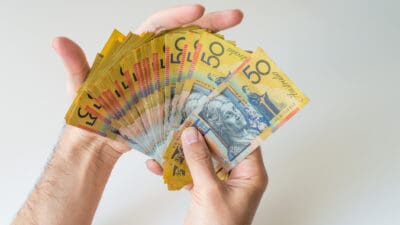It's a little bit deceptive that the S&P/ASX 200 Index (ASX: XJO) is down just 1.5% this year so far.
That alone doesn't tell the story of how wild a rollercoaster it has been for ASX share investors in 2022.
For example, panic about inflation and interest rates sent the benchmark down 10% in January.
Then in February, the ASX 200 dropped more than 4% in just a few days as Russian tanks rolled into Ukraine.
So we're only three months into the year, and there have already been at least two dramatic sell-offs.
Every time such downturns happen, the market sees retail investors repeatedly make the same errors that ultimately cost them money.
Here are the top five, as identified by Morgan Stanley senior investment strategist Dan Hunt:
Panic selling
Hunt admits that seeing your portfolio plummet in value, and even dive into the red, can be psychologically "gut-wrenching".
But one must resist any impulse to sell.
"The urge to staunch the bleeding can be overwhelming — to salvage what you can and wait for the dust to settle," he said.
"Ironically, this can be the single most damaging thing an investor can do."
During sell-offs and corrections, drops in the value of your ASX shares are only theoretical. Unless you sell.
"Selling into a falling market ensures that you lock in your losses. If you wait years to get back in, you may never recover."
Hunt took the example of a person who stayed invested from 1980 to the end of February this year. They would have reaped a return of 12% a year.
"Someone who started at the same time, but sold after downturns and stayed out until two consecutive years of positive returns… would have averaged a 10% return annually."
Two percentage points doesn't sound like much, but if each person put in $5,000 each year, the buy-and-hold investor would have $4.3 million now. The panic seller would have $2.5 million.
Hunt urged investors to "take the long view".
"If you don't need cash right away and have a well-researched, diversified portfolio, realise that downturns ultimately are temporary," he said.
"The market may sometimes feel like it could go to zero, but market history shows that rebounds can return many portfolios to the black in just a few years."
Fleeing to cash and staying there
This is a secondary effect of panic selling.
It's bad enough you sold out, but keeping it as cash will ensure you miss out on a market rebound.
"Returning to our hypothetical example, an investor who sold after a 30% market drop and stayed in cash would have just $430,000 at the end of 40 years, even after investing $5,000 a year."
Hunt urged investors to put their money to work.
"If the market rebounds, they will be glad that they already put some of their money back to work, rather than having all of it on the sidelines."
Overconfidence
Overestimation of one's abilities is a common psychological affliction, not just limited to ASX retail share investors.
"An example of that is 'anchoring' the value of a beaten-down company by the much higher price it used to trade at when it still has a lot further to fall," said Hunt.
"As this practice is known by market insiders as 'trying to catch a falling knife', it is clearly one with an ignominious history."
Hunt added overconfident investors may buy some perceived bargains during downturns. But they could "drive themselves to distraction and end up with a portfolio in disarray and even deeper losses".
"In times of market uncertainty, you don't have to figure out what to do next on your own. Find a financial advisor you trust to go through your portfolio with you."
Trying to 'make up' for losses
Shares have no memory. They don't care whether you bought them in the past for a higher or lower price than the current level.
Yet investors commonly detest the idea of selling a stock at a loss.
"This can cause them to hang onto losers too long because they believe those stocks will rise again and to sell winners too early because they worry those stocks will decline — what is known in behavioural finance research as the 'disposition effect'."
According to Hunt, they would be better served doing the opposite.
"Investors would be better off selling stocks doing poorly in the market and holding onto stocks that are rising because they are better positioned for the current environment."
Letting go of hopeless shares at a loss can also be beneficial for one's tax liabilities.
Forgetting to rebalance
If you adjusted your portfolio to a higher proportion of your portfolio in non-stock assets — like bonds, real estate or cash — in preparation for a sell-off, don't forget to reverse that after the market dips.
"The corollary to buying equities to rebalance after a selloff is the need to sell them after a strong bull market moves those allocations much higher," said Hunt.
"That tends to enforce a buy-low and sell-high discipline on your investments that is systematic, rather than speculative."









